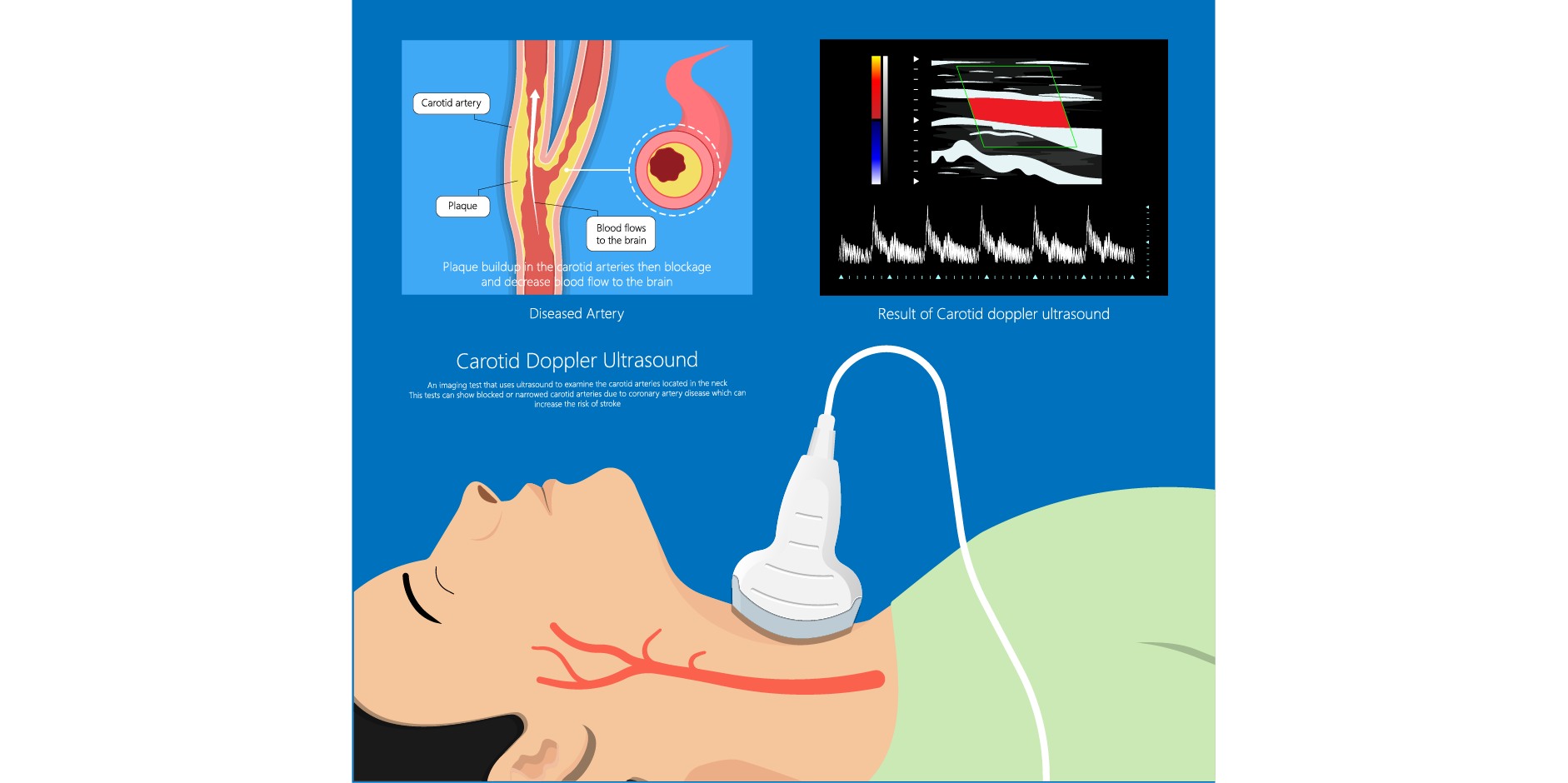Nội dung của trang này:
Nội dung của trang này:
Laboratory Tests and Ancillaries
Diagnostic Tests
Blood glucose,
hemoglobin A1c (HbA1c), complete blood count (CBC) with platelet count, renal
function tests, serum electrolytes, fasting or non-fasting lipid profile,
prothrombin time (PT), international normalized ratio (INR), and activated
partial thromboplastin time (aPTT) may be done. Cardiac
biomarkers may be done to confirm or rule out acute coronary syndrome if needed.
A 12-lead electrocardiogram (ECG) may be done to screen for atrial fibrillation
(AF) and atrial flutter and to assess for other accompanying cardiac conditions.
Chest X-ray may also be requested.
 Ischemic Stroke_Diagnotics 1
Ischemic Stroke_Diagnotics 1Perform the following tests, if required:
A toxicology screen, blood alcohol level, arterial blood gas (if hypoxia is suspected), liver function tests, pregnancy test, lumbar puncture (if subarachnoid hemorrhage is suspected and CT is negative for blood), electroencephalography (EEG) (if seizures are suspected), and echocardiogram (if cardioembolism is suspected) may be done.
Imaging
Neuroimaging Studies
Imaging is mandatory in all patients with suspected stroke and
should be initiated within 20-25 minutes of arrival in the emergency room for
patients who may be candidates for intravenous (IV) Alteplase and/or mechanical
thrombectomy.
Non-contrast Cranial Computed Tomography (NCCT)
Non-contrast cranial computed tomography
(NCCT) differentiates ischemic from hemorrhagic stroke or other structural
brain lesions that may mimic stroke. Hemorrhage appears immediately, while
ischemic changes may take time to appear. This is mandatory before initiating
any specific therapy to treat acute ischemic stroke. This is effective in
ruling out acute intracerebral hemorrhage (ICH) within 6 hours of acute stroke
prior to intravenous Alteplase administration. The Alberta Stroke Program Early
Computed Tomography Score (ASPECTS) helps in the detection of early ischemic changes
and should be evaluated in patients who are candidates for intravenous
thrombolysis. A hyperdense middle cerebral artery (MCA) on CT should not be
used as criteria to withhold intravenous Alteplase.
Computed Tomography Perfusion (CTP)
Computed tomography perfusion quantifies blood flow through the
brain using a series of CT scans obtained after application of iodinated contrast
media and estimates infarction core size. This may be used to evaluate the
volume of infarcted and hypoperfused brain tissue in patients with acute
ischemic stroke.
 Ischemic Stroke_Diagnotics 2
Ischemic Stroke_Diagnotics 2Magnetic Resonance Imaging (MRI) of the Brain
Magnetic resonance imaging of the brain is recommended in acute ischemic stroke in patients with symptom onset <6 hours, wake-up or unknown onset stroke, minor or posterior circulation stroke, transient ischemic attacks (TIA) and suspected stroke mimics that were not clarified by CT. This is important in patients with unusual presentations, silent cerebrovascular disease, especially chronic microbleeds and rare stroke varieties. This may be used to rule out acute intracerebral hemorrhage within 6 hours of acute stroke prior to intravenous Alteplase administration. An MRI can be used to identify diffusion-positive fluid-attenuated inversion recovery (FLAIR)-negative lesions that can be a basis in selecting patients who can benefit from recombinant tissue plasminogen activator (rt-PA) administration after 4.5 hours of stroke symptom recognition. It is not recommended to use MRI to exclude cerebral microbleeds before intravenous Alteplase administration.
Cranial Magnetic Resonance Imaging with Diffusion-Weighted Imaging (DWI)
Cranial magnetic resonance imaging with diffusion-weighted imaging is highly sensitive in detecting early cerebral ischemic changes in acute stroke patients.
Vascular Imaging
Cranial Computed Tomography Angiography (CTA)
Cranial computed tomography angiography may be used on patients suspected with intracranial large vessel occlusion without a history of renal impairment and who are candidates for thrombectomy. For patients on Metformin, postponement of administration of Metformin should be considered. Serum creatinine concentration may be deferred if the patient does not present with renal impairment.
Magnetic Resonance Angiography (MRA)
Magnetic resonance angiography is an alternative to CTA when MRI is being performed or if iodinated contrast is contraindicated.
Other Vascular Imaging Tests
 Ischemic Stroke_Diagnotics 3
Ischemic Stroke_Diagnotics 3Carotid duplex ultrasonography is done for extracranial carotid assessment. A transcranial doppler may be performed for the assessment of intracranial vessel flow. A digital subtraction angiography (DSA) can be done when high-resolution vascular imaging is needed or for interventional procedures.
